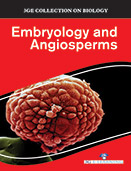Biology

The life cycle of plants is constituted by two generations: sporophytic and gametophytic. Gametophytic generation is the sexual generation. In the history of angiosperm embryology there have been three distinct periods: the first, in which the key aim was to unravel the chief facts regarding the development of the pollen and embryo sac, and the processes of fertilization and seed formation; the second, in which interest focused largely round a study of comparative embryology and an evaluation of the data thus obtained for the improvement of the existing systems of classification; and the third and latest in which embryology has become an experimental subject like cytology and physiology, where one tries to study the optimal conditions for the storage of the pollen and its germination; the receptivity of the stigma, fertilization and fruit-setting and how far the normal processes of development can be influenced or altered by a change in the environment. Embryology thus provides many features that are complex and, when properly applied along with evidence from other sources, offers good indications of relationships at various taxonomic levels, from the ordinal to the specific level.
This edition entitled “Embryology of Angiosperms” encompasses investigations on virtually all the events relevant to sexual reproduction, covering an understanding of the structural diversity in micro- and megasporogenesis, the development of micro- and megagametophytes, the fertilization, and the development of embryo, endosperm and seed coat. The reproductive and embryological knowledge of economically important plants, such as many Leguminosae, provides useful information in relation to the fields of cell biology, reproductive ecology, and taxonomy and for purposes related to seed production and crossbreeding. This book serves as beneficial informative guide to the students as well as practitioners in the field of Botany, Agriculture and Forestry.